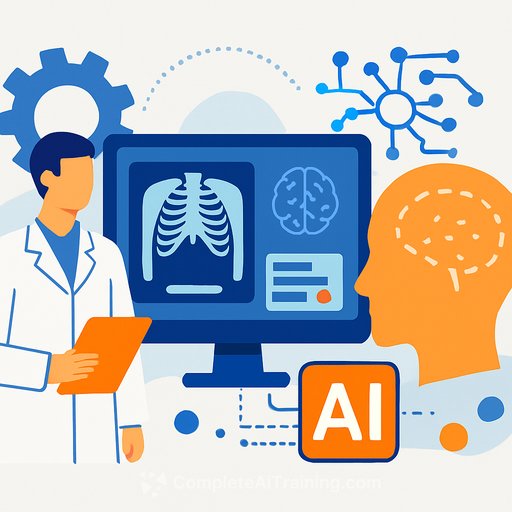Generative AI in medical imaging: applications and challenges
On October 10, 2025, Evi Huijben defended her PhD at the Department of Biomedical Engineering. Her work shows how generative AI can produce realistic medical images, enrich limited datasets, and strengthen diagnostic models - all with a focus on clinical utility.
Why this matters for healthcare teams
Most AI tools in imaging are constrained by narrow datasets and scarce labels. Generative models can fill gaps: create rare disease examples, balance cohorts, and simulate progression when longitudinal data is limited. This helps teams build and validate models that better reflect real patients.
What the research shows
- Conditional image synthesis can produce the specific images needed for downstream tasks when acquiring them is expensive, impractical, or impossible.
- Structuring latent spaces enables controlled generation, so outputs stay clinically relevant rather than visually plausible but misleading.
- Because labeled data are scarce, pipelines must work with limited or weak labels without sacrificing traceability and performance.
Clinical applications explored
- Synthetic datasets for training classifiers, including models that disentangle class characteristics to generate images for specific patient groups.
- Generation of images for rare conditions to improve detection in underrepresented cohorts.
- Patient-specific synthesis: forecasting future brain MRIs to support prognosis in Alzheimer's disease and detecting abnormalities such as tumors or motion artifacts.
- Organization of SynthRAD2023, a global challenge on generating synthetic CT from other imaging types (e.g., MRI) using a large cancer dataset, enabling fair model comparisons. Challenge overview
Challenges to address
- Model design often bends to compute limits, which can sideline clinical relevance and controllability.
- Evaluation is difficult: ground truth is limited and many metrics fail to reflect what clinicians need to trust and use an image.
- Objective, reliable quality metrics for medical images remain an open problem; expert review and clear acceptance criteria are essential.
- Clinical translation requires diverse benchmark datasets, protocol transparency, and reproducible pipelines.
From research to bedside: a practical checklist
- Define the clinical target: diagnosis aid, triage, planning, or monitoring. Specify how synthetic data will support that target.
- Set acceptance criteria upfront: image realism, lesion fidelity, uncertainty bounds, and impact on downstream task performance.
- Plan labeling strategy: combine limited expert labels with weak labels or self-supervision; document provenance and inter-rater variability.
- Build a validation stack: technical metrics, blinded expert review, stress tests on edge cases, and external validation across sites and scanners.
- Address risk and governance: bias checks across demographics, data leakage prevention, audit trails, and monitoring for distribution shift.
- Budget for compute and time-to-result; ensure reproducibility with versioned models, seeds, and deterministic preprocessing.
- Map to regulatory expectations for AI-enabled devices and quality systems. FDA resources
Who is behind the work
Evi Huijben completed her PhD on Medical Image Synthesis with Deep Learning for Clinical Applications. Supervisors: Josien Pluim (Promotor), Maureen van Eijnatten (Co-Promotor), and Sina Amirrajab (Co-Promotor). The dissertation shows that, with task-specific design and careful validation, generative models can create realistic images with potential for clinical use.
For teams upskilling in AI
If your department is building skills in generative AI and imaging, explore curated programs by job role: AI courses by job.
Your membership also unlocks:






